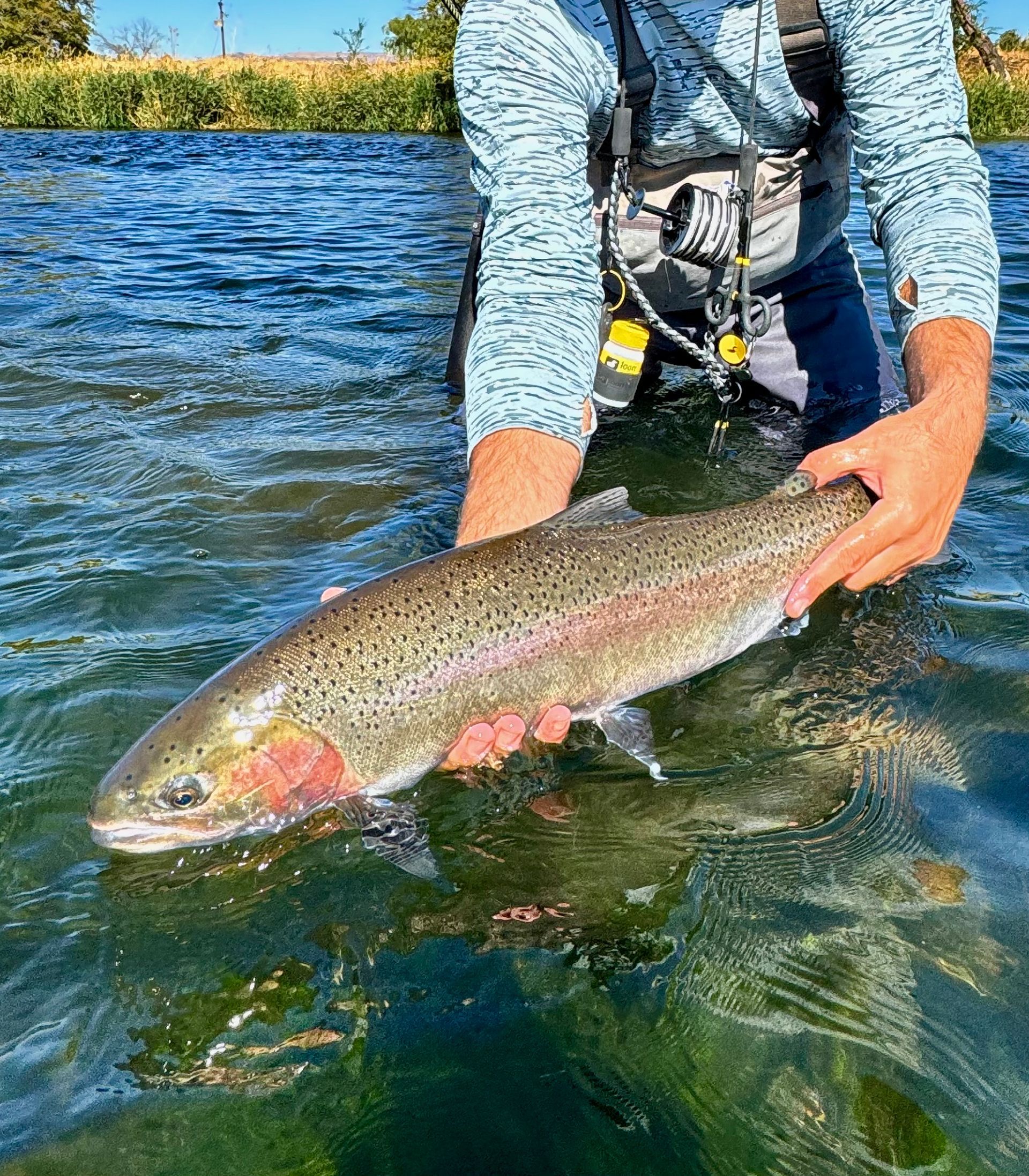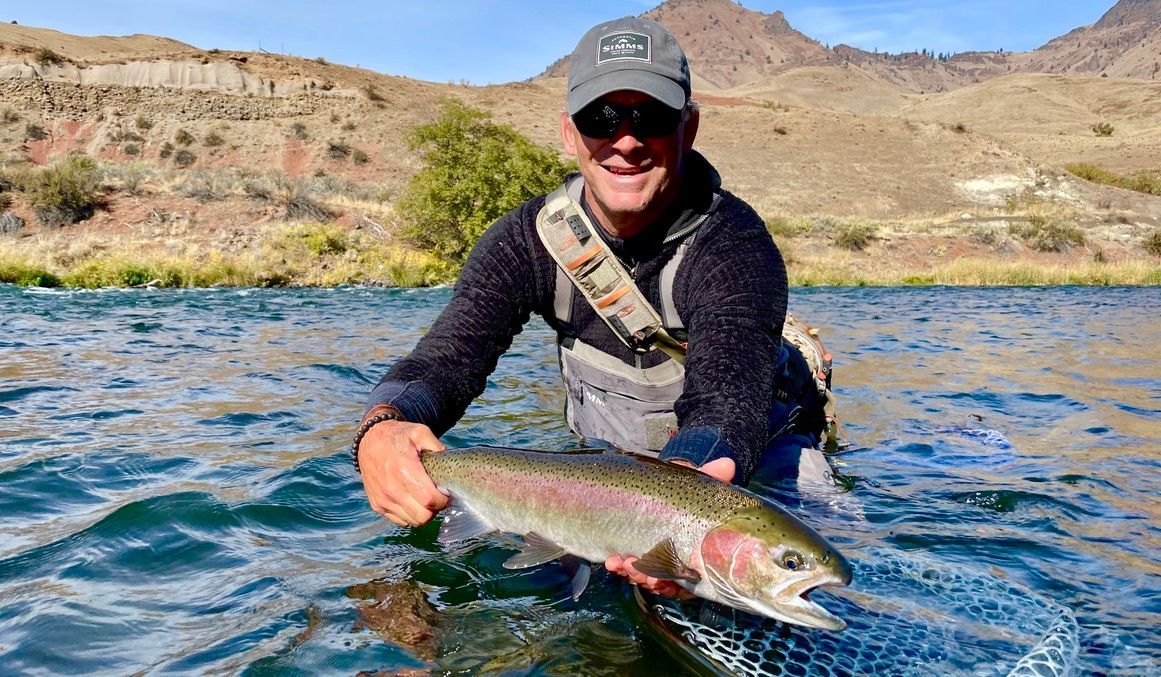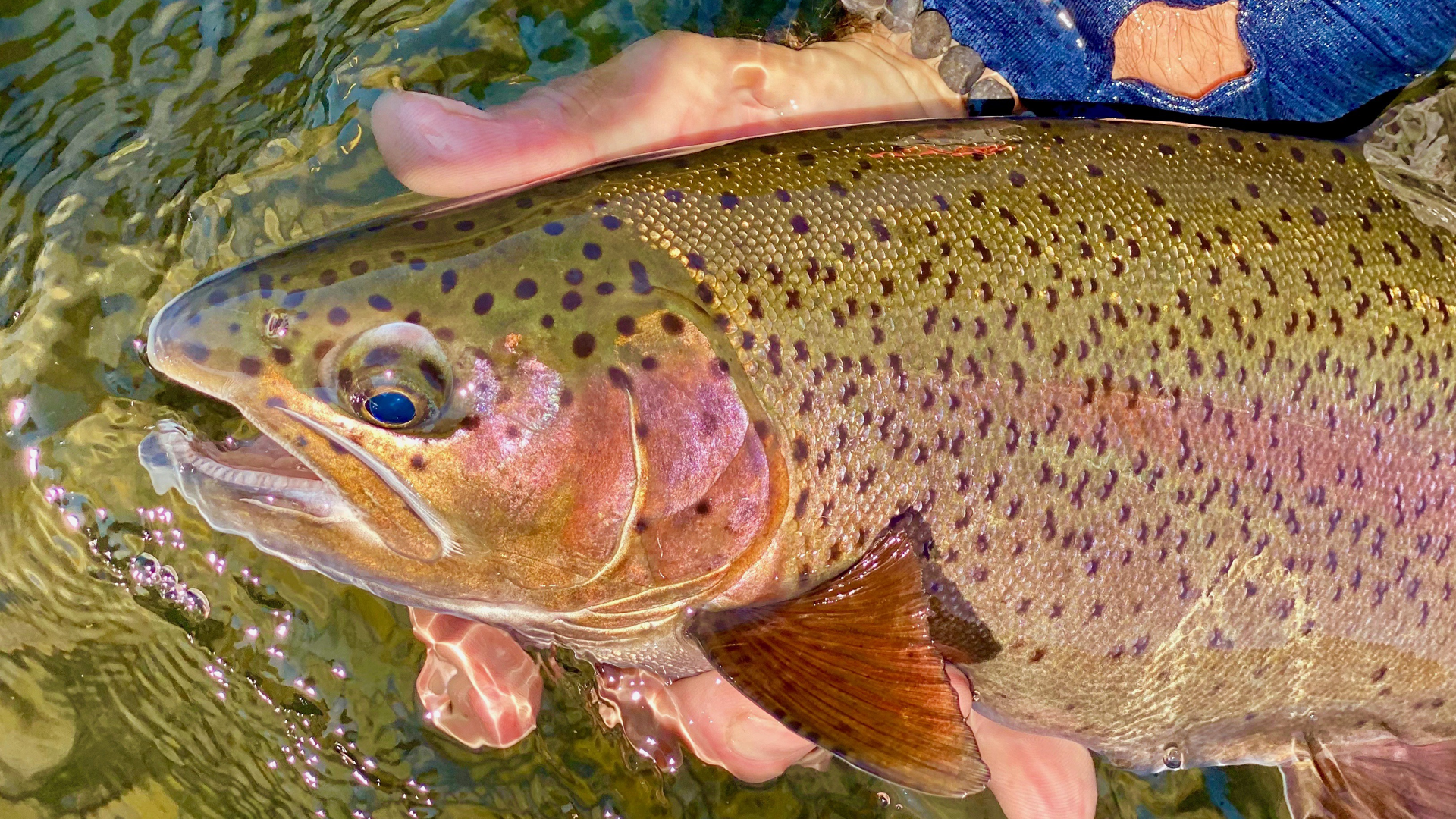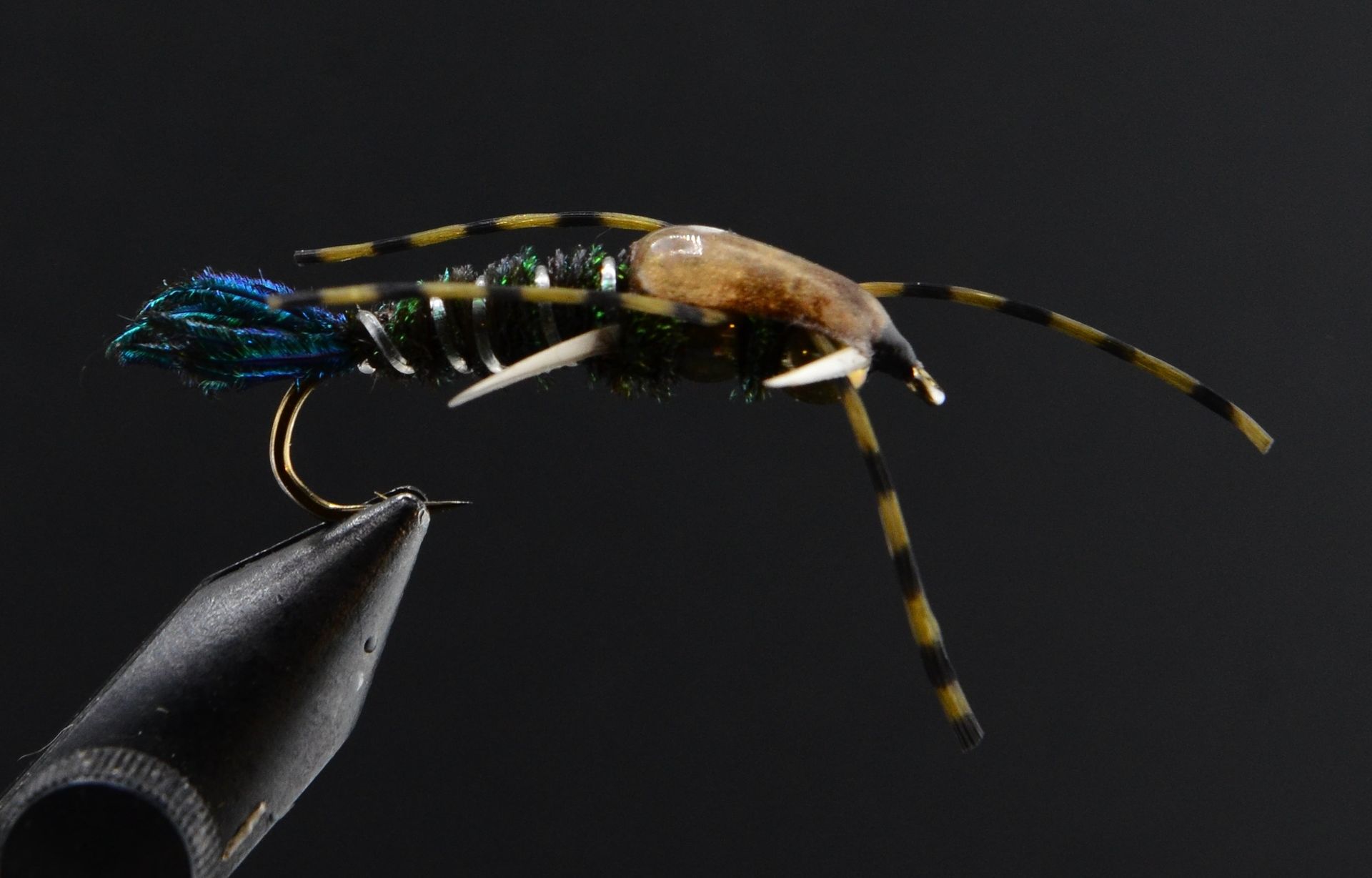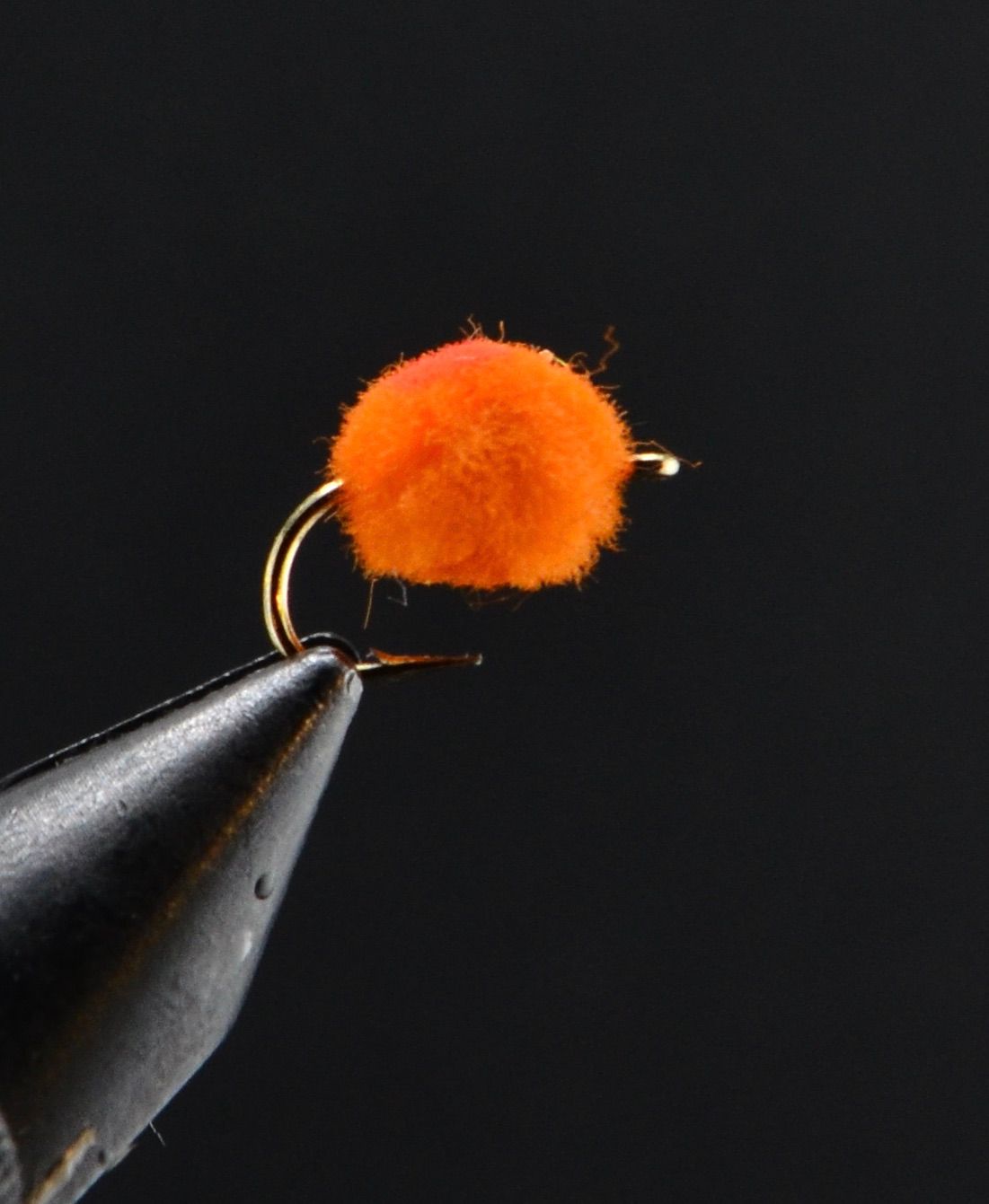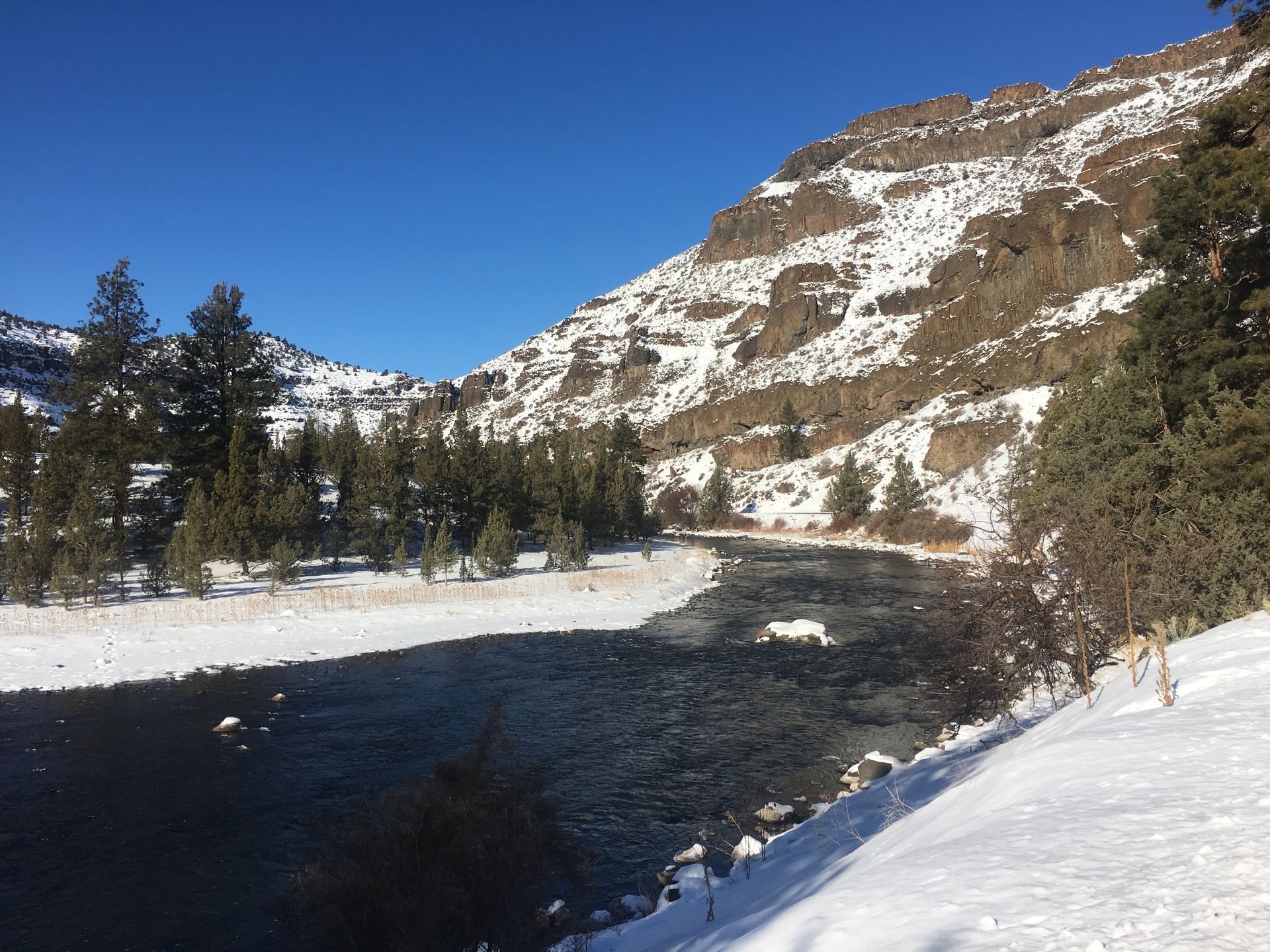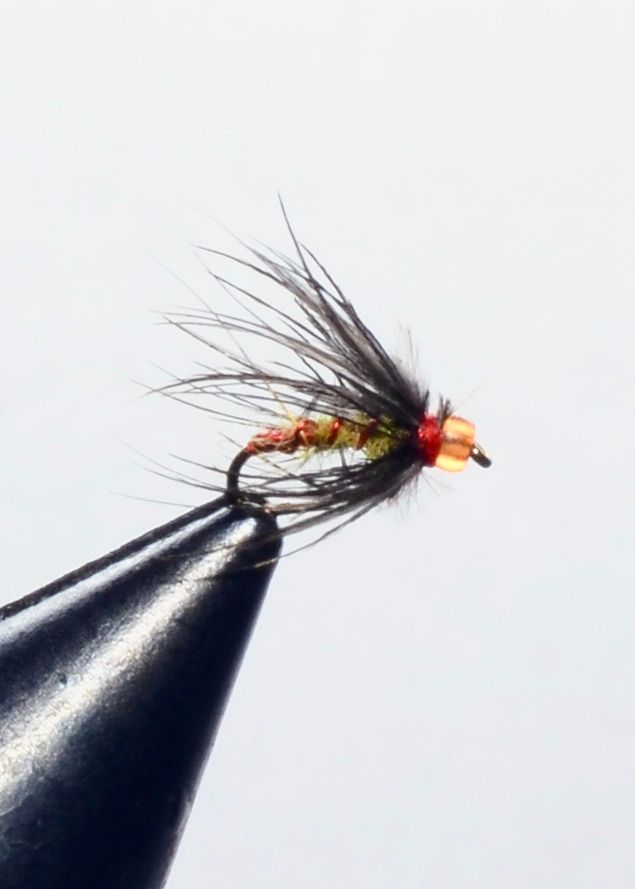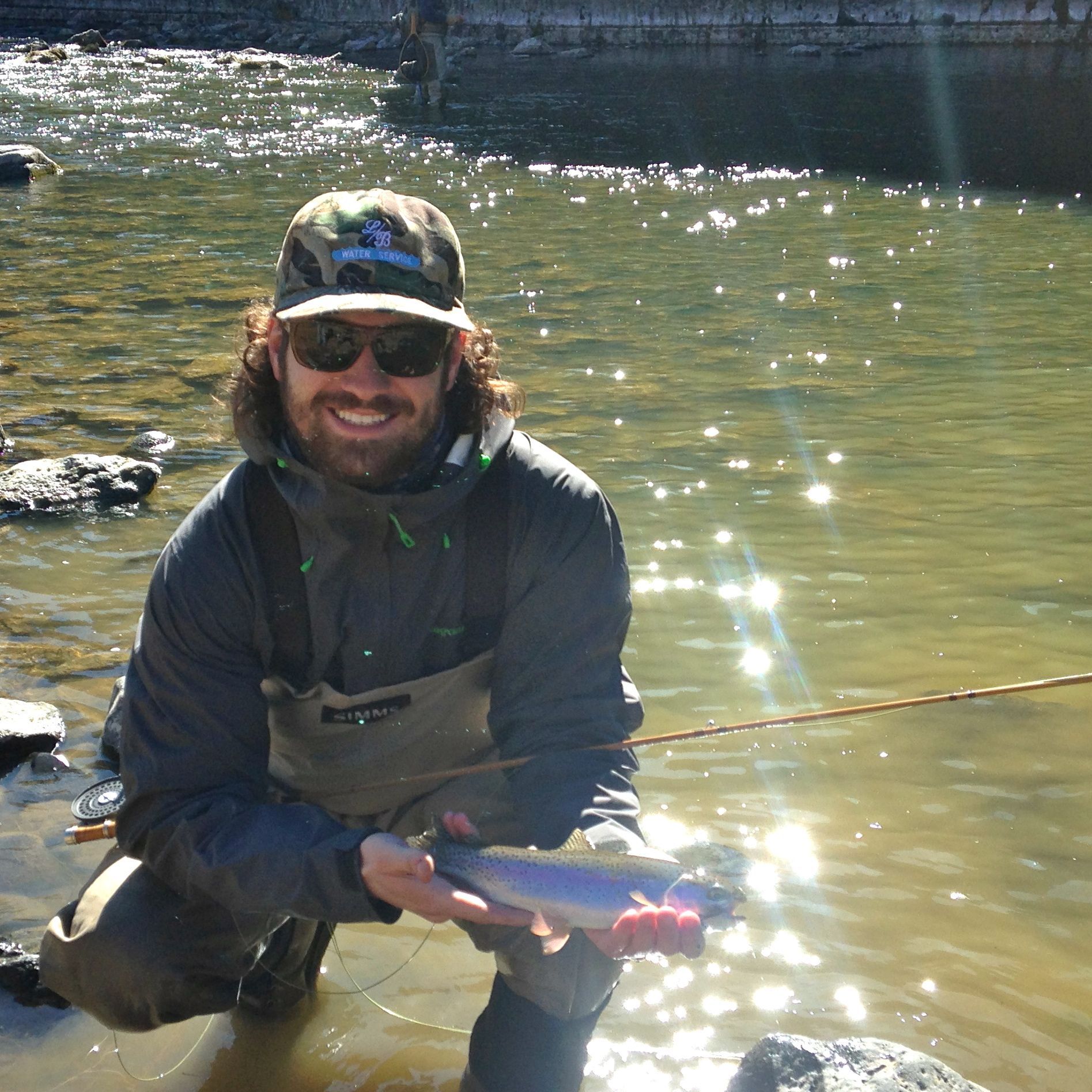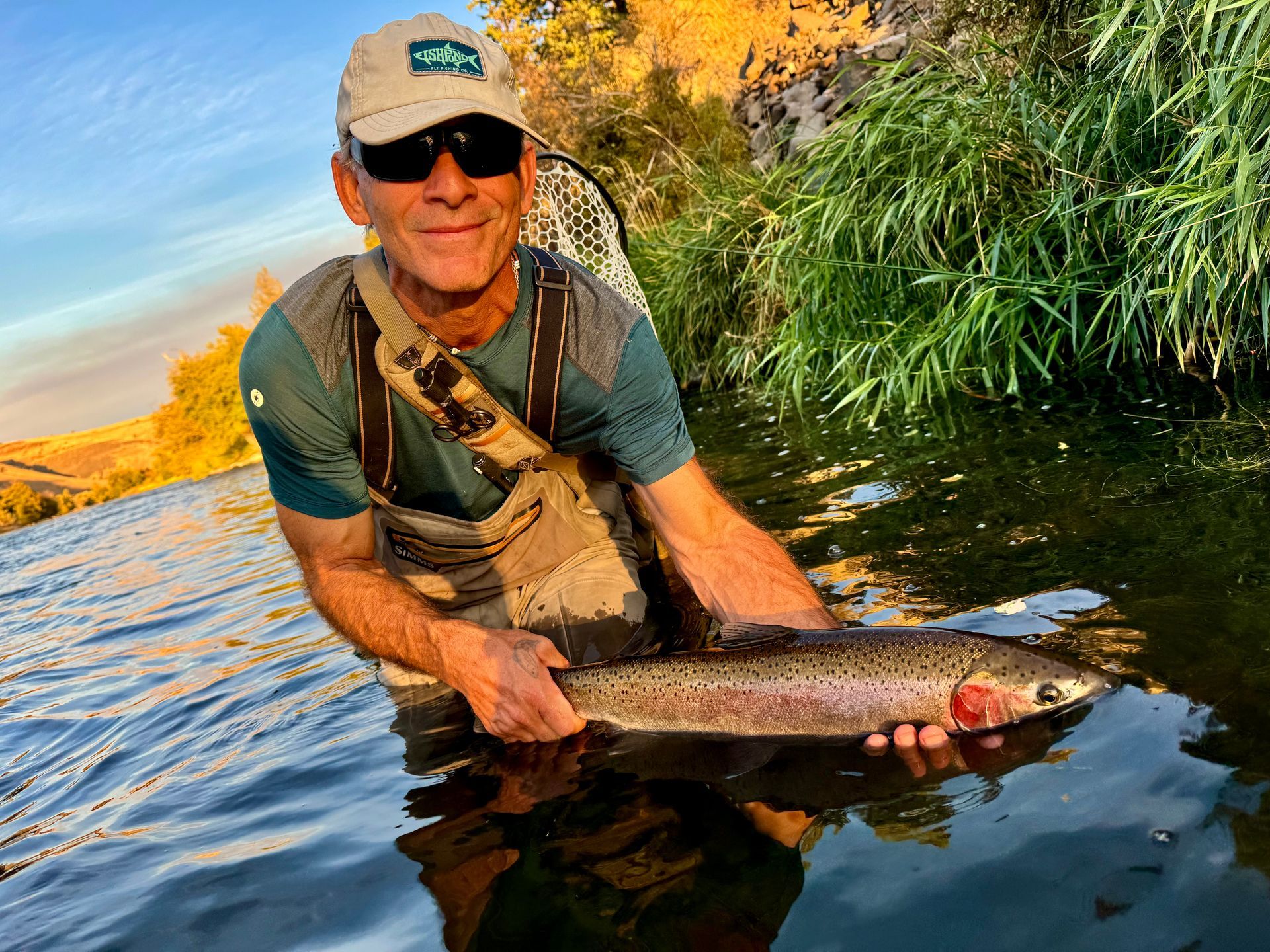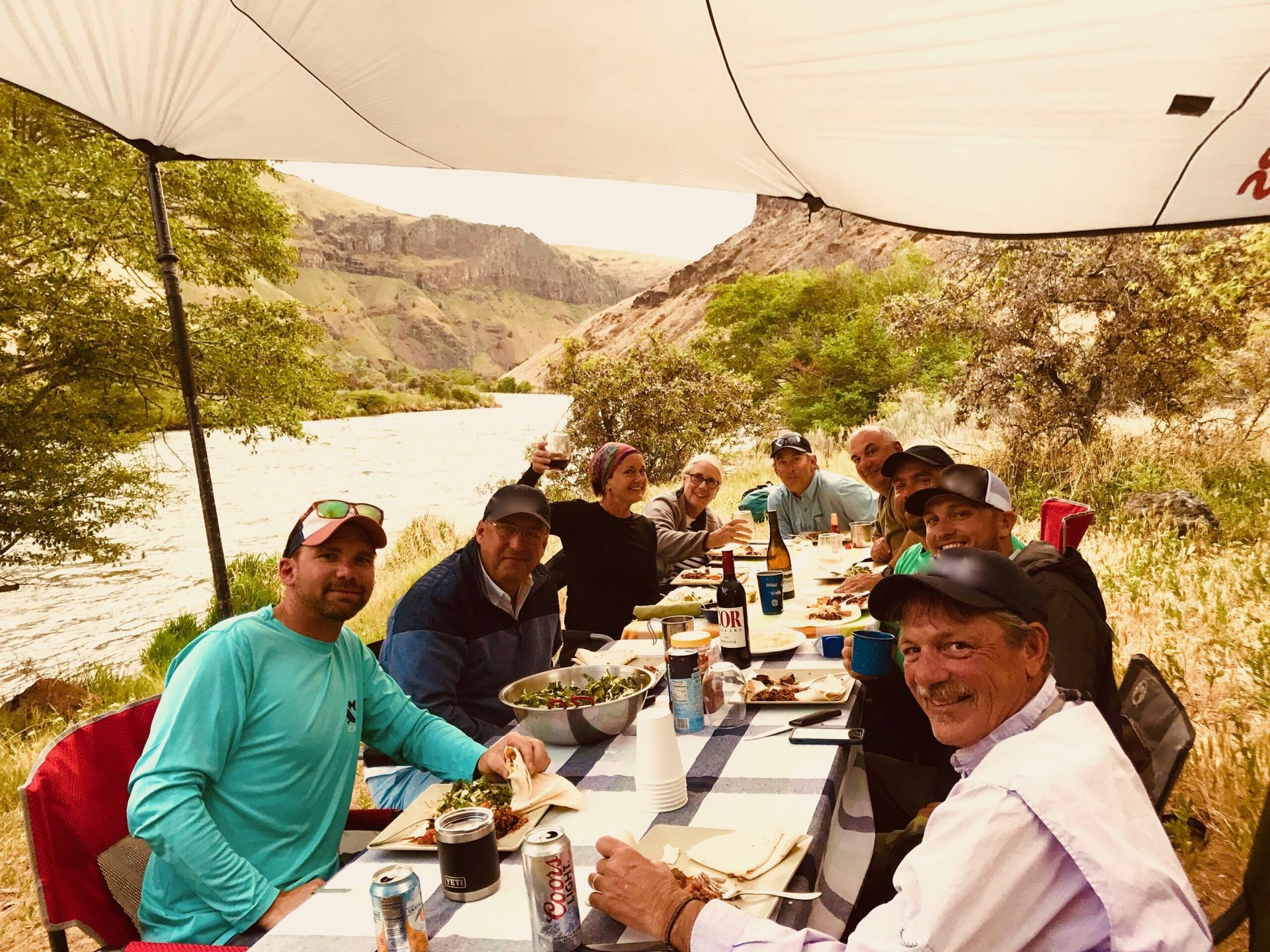Late Fall Fishing Report
Late Fall into Winter 2024 Fishing Report
It’s been a wonderful Autumn so far. For many of us, this really is our favorite time of the year for fishing our local waters. Here in Central Oregon, our rivers and lakes change dramatically from mid-October until November 1st. As irrigation season ends and water diversion ends, the flows change a bunch practically overnight. Understanding how this effects the fishing is equally complicated and important.
Down on the Lower Deschutes, we had a nice bump in the flows in mid-October. As usual this got the trout eating as the bugs were pulled from their rocks and what few eggs are in the river were displaced from their redds. This is an annual occurrence down there. Sadly, this year the powers that be only raised the river less than a thousand cfs and even then, for less than a week. The river needs more water in it for the steelhead and salmon to get busy on their redds. Because while we do love to have steelhead in the river, their journey will be for naught if they can’t successfully spawn. And for that, more water is very important. Until then—and this might happen any day—the fishing remains solid. For trout, every day is a slightly different program. Some days, a Jimmy Leg and red Copper John (the ol’ Jimmy John!) gets the job done. On others, we’ve actually had our best action on #18 Black Perdigons!! So if you’re heading down to catch trout, be prepared to get creative. Other flies to have handy: #14&16 Rubber-Leg Hare’s Ear, #18 Olive Soft Hackle, #16 Psycho Prince. For steelhead, if you’re swinging, it’s time for T-11 and Intruders! There are still fish working their way through the system, but they are less, curious, less “chasey”, and therefore we have to get into their zone, present the fly as long as we can, entice their interest/aggression. Also, as we get deeper into the short, cold days of Autumn, we like to start presenting to steelhead (and trout) what nature provides. And that means eggs! The combo of a Hot Bead Peacock Stone with a Glo-Bug has been a crowd favorite for many years. Our experience has been that something is gonna eat it!! Keep an eye on the flows https://levels.wkcc.org/?f=y82&daysback=10 Let’s hope for an extended, responsible rise. 5500cfs would be great!
Meanwhile the Crooked River has been dropped to a great flow and is fishing awesome! On a recent visit, fish were fooled on midge nymphs, small black leeches, BWO dries and even little egg ‘patterns’. The river is holding just under 100cfs, which is perfect for this time of the year. Fingers crossed it stays there all winter! The fish are spread throughout all the public water. You don’t have to fish the upper couple miles (with everyone else!). Do yourself a favor, explore! As in the summer, you’re looking for water with a medium current where you can’t see the bottom. That’s where the trout migrate to when the flows drop. For swinging leeches, the big pools are perfect through the winter. I love to trail the leech with a small Olive Soft Hackle. A slow, micro-twitch retrieve is most effective. For targeting the whitefish spawn, fish the shallower, quick, riffle areas. This is where they spawn. The trout will be both behind and amongst them.
Up on the Fall River, this time of the year means the first BWO hatches to go along with the ubiquitous midges. As usual, we look for an overcast, wet day in the 50’s for the mayflies to hatch. Typically, this will happen around eleven o’clock in the morning and last for a couple hours. Then the question becomes, where to fish? While the stocking program slows to nothing by the end of the October, the trout will get harder to fool day in and day out. In the areas that get the most pressure, even though there are more fish to catch, you’ll find the catching gets tougher. And that is precisely as it should be! So look around, take a hike, locate a fish (or ten) and figure out how to get hooked up. If you’re up there before or after the hatch, you might need to get a little ‘dirty’ to fool, by which we mean flashy Crystal Bugger and/or large Glo-Bugs. And often times this requires getting your flies right on the fish’s nose! So you will lose some in the submerged wood, which is where the fish will be holding. As a reminder, the river below the falls is closed until May 22nd.
A few other things to keep in mind: The
Middle Deschutes below Bend is now in high flows. It will be like this until mid-April. Much as we love that beautiful, rugged stretch of river, anything over 350cfs makes getting around tricky. Over 600cfs it’s just plane sketchy! There are still places down there where you can wet a line, but be careful. Meanwhile,
Town Water, the river from Bend up to Benham Falls actually fishes pretty good this time of the year. If you live here, do yourself a favor and explore. Yes, it can be fickle, there are stretches that don’t hold a lot of fish, hatches can be sparse and the canyon gets cold, but a hike along a river with a fly rod at the ready is always worth doing! On recent treks between Lava Island and the falls, I saw trout rising for BWO dries during the middle of the day. The bigger browns will have moved to the safety of the deepest water. Some of the boulder pockets below the falls and the Big Eddy rapid is classic holding water for the browns through the winter. As a reminder, the river above Benham is closed until May 22nd.
As I write this, the snow is flying! Looks like we might have one of those early winters… Bundle up, get out there and enjoy the cold season!
As always, feel free to reach out for tips.
griff@griffmarshalloutdoors.com or 541-480-4280. I’m happy to offer them!
Griff
